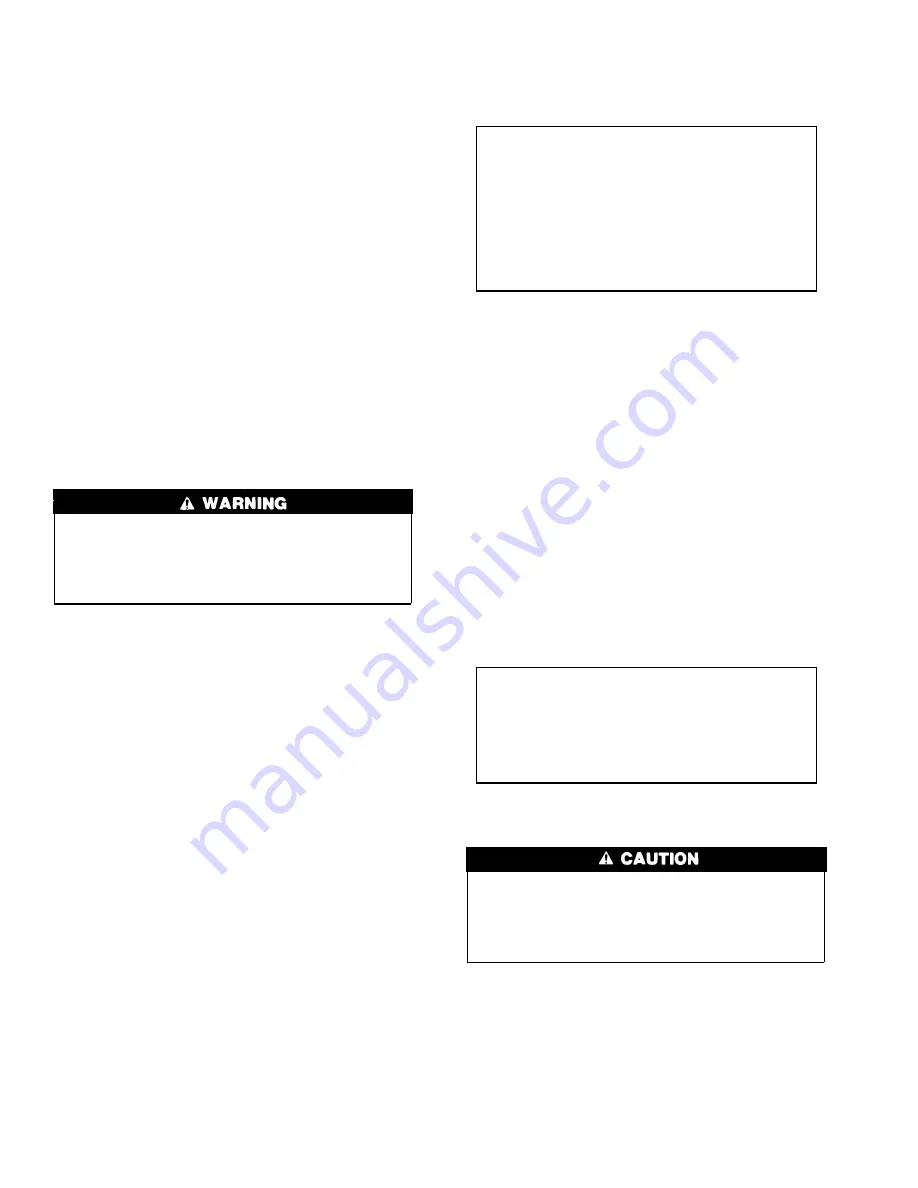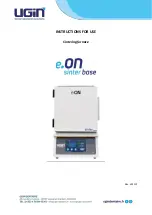
that all time delays have expired. Short the TWIN/TEST
terminal to ground or COM for 1 to 4 sec. See Fig. 11 for
terminal locations.
NOTE:
The component test feature will not operate if the control
is receiving any thermostat signals and until all time delays have
expired.
The component test sequence is as follows:
a. The furnace control checks itself, operates the inducer
motor on low speed for 7 sec and on high speed for 7 sec,
then stops.
b. The hot surface ignitor is then energized for 15 sec, then
de-energized.
c. The blower motor operates on low-gas-heat/heat pump
low-heat/low-cool/continuous fan speed for 7 sec, then
stops.
d. The blower motor operates on high-gas-heat speed for 7
sec, then stops. The gas valve and humidifier terminal
HUM are not energized for safety reasons.
NOTE:
The EAC terminals are energized when the blower is
energized.
e. The blower operates on heat pump high-heat/high-cool
speed for 7 sec, then stops.
2. After all connections have been made, purge the gas lines and
check for leaks.
Never purge a line into a combustion chamber. Never use
matches, candles, flame, or other sources of ignition to check
for gas leakage. Use a soap-and-water solution to check for
gas leaks. A failure to follow this warning could result in fire,
explosion, personal injury, or death.
3. To operate furnace, follow procedures on operating instruction
label attached to furnace.
4. With furnace operating, set thermostat below room tempera-
ture and observe that furnace goes off. Set thermostat above
room temperature and observe that furnace restarts.
ADJUSTMENTS
1. Set gas input rate.
The gas input rate must be set for both high and low fire. Each
adjustment is made independently at the gas control regula-
tors.
There are 2 methods of adjusting the gas input rate. The
preferred method is by using Table 8 and following instruc-
tions in item a. The second method is by clocking the gas
meter and following instructions in item b.
The procedure in item b. must be used for altitudes above
2000 ft. The gas valve regulators have been nominally set for
1.5-in. wc for low fire and 3.5-in. wc for high fire for natural
gas.
a. Check gas input rate using Table 8.
(1.) Obtain average yearly heat value for local gas supply.
(2.) Obtain average yearly specific gravity for local gas
supply.
(3.) Verify furnace model. Table 8 can only be used for
model 58TMA Furnaces.
(4.) Check and verify orifice size in furnace. NEVER
ASSUME THE ORIFICE SIZE. ALWAYS CHECK
AND VERIFY.
(5.) Find natural gas heat value and specific gravity in
Table 8.
(6.) Follow heat value and specific gravity lines to point of
intersection. Find orifice size and manifold pressure
settings for proper operation at given natural gas
conditions on low and high fire.
EXAMPLE:
Heat value = 1025 Btu/cu ft
Specific gravity = 0.58
Therefore: Orifice No. 44 *
Manifold pressure 3.3-in. wc on high fire and
1.4-in. wc on low fire.
* The furnace is shipped with No. 45 orifices. Therefore, in
this example all main burner orifices must be changed and
the manifold pressure must be adjusted.
(7.) Proceed to item c. to adjust manifold pressure.
b. Check gas input rate by clocking gas meter for low and
high fire.
(1.) Obtain average yearly heat value for local gas supply.
NOTE:
Be certain heating value used for calculating is correct for
your altitude. Consult local gas utility for altitude adjustments, if
any, of gas heating value.
(2.) Check and verify orifice size in furnace. NEVER
ASSUME THE ORIFICE SIZE. ALWAYS CHECK
AND VERIFY.
(3.) Turn off all other gas appliances and pilots.
(4.) Turn SW-2 to ON. Close R-to-W/W1 and jumper R to
W2 to start furnace in high fire and let run for 3
minutes.
(5.) Measure time (in sec) for gas meter to complete 1
revolution.
(6.) Refer to Table 9 for cu ft of gas per hr.
(7.) Multiply gas rate (cu ft/hr) by heating value (Btu/cu
ft).
EXAMPLE:
Btu heating input = Btu/cu ft X cu ft/hr
Heating value of gas = 1070 Btu/cu ft
Time for 1 revolution of 2-cu ft dial = 72 sec
Gas rate = 100 cu ft/hr (from Table 9)
Btu heating input = 100 X 1070 = 107,000 Btuh
(8.) Remove jumper R-to-W2, and repeat items (5.)
through (7.) for low fire.
DO NOT redrill burner orifices. Improper drilling (burrs, out
of round, etc.) can cause excessive burner operating noise and
misdirection of burner flames. This could result in flame
impingement on burners and heat exchanger surfaces, leading
to potential failures.
(9.) Measured gas inputs should equal low- and high-fire
gas inputs on unit rating plate,
±
2 percent.
(10.) Proceed to item c. to adjust manifold pressure.
c. Adjust gas manifold pressure.
(1.) Move SW-2 to the ON position and jumper R-to-
W/W1-W2 to call for high-gas heat. (See Fig. 11 and
14.)
(2.) Remove gas control regulator adjustment seal caps.
(See Fig. 16.)
14




































